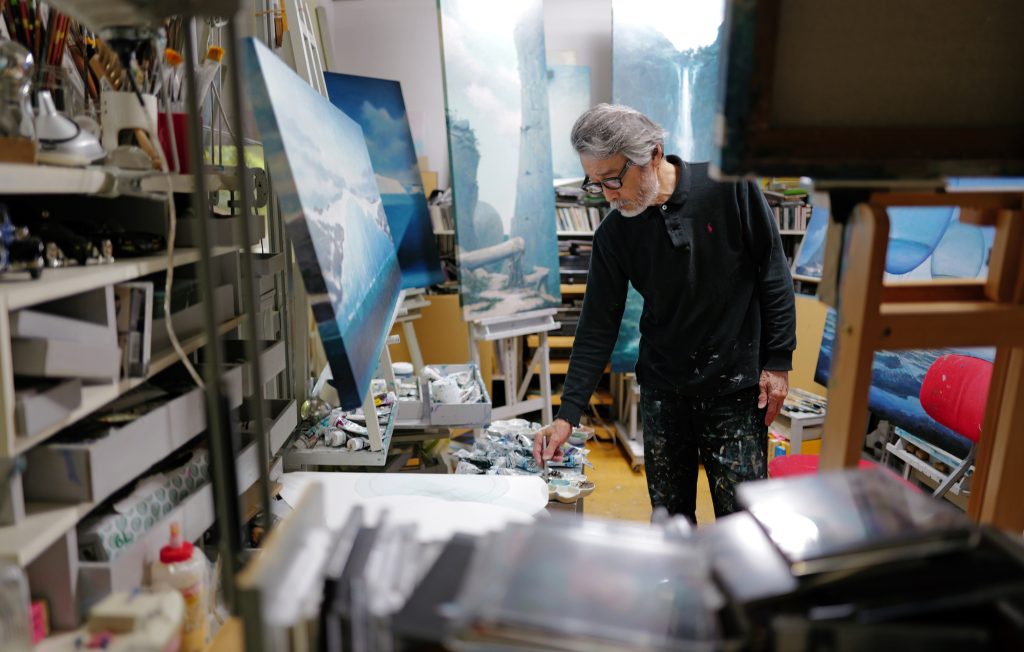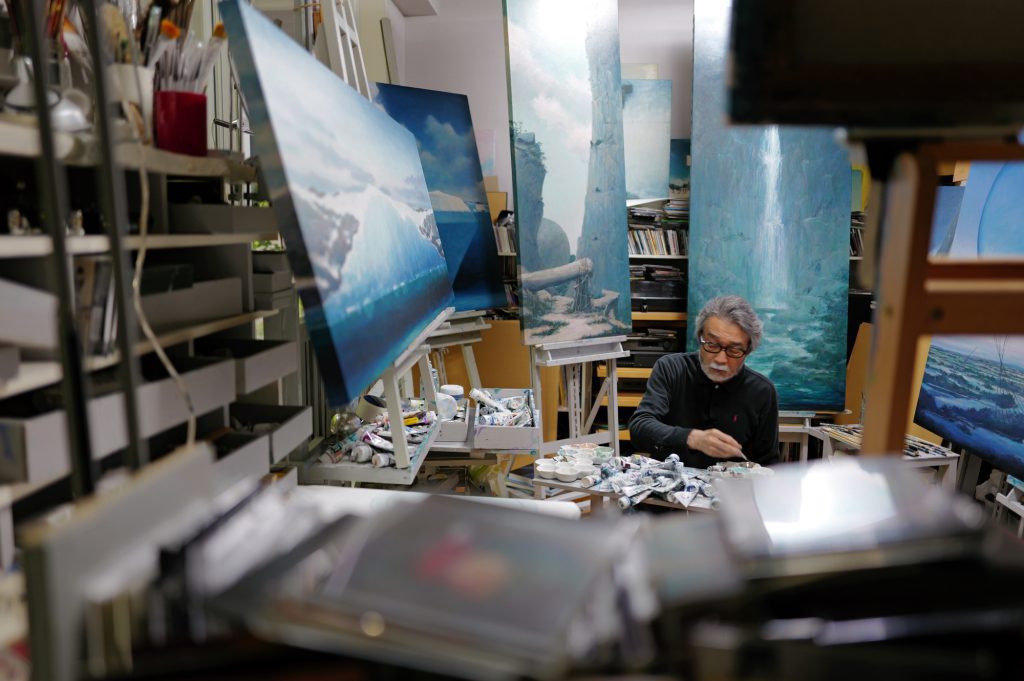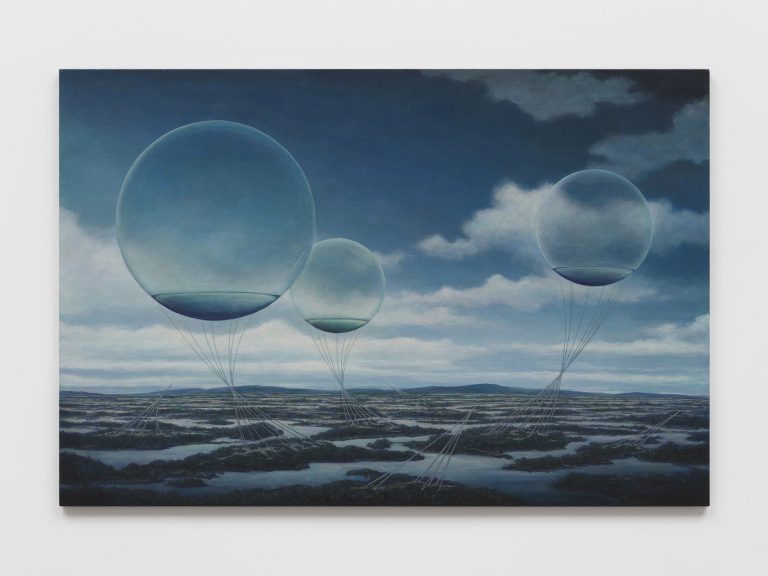

Courtesy of the artist
Minoru Nomata’s art stands at the crossing of the real and the imagined, creating structures that seem both ancient and futuristic. His work, characterised by solitary architecture and vast landscapes, invites viewers into a world where time and space are fluid concepts.
hube: Your work often features fantastical, solitary structures that seem both ancient and futuristic. How do you conceptualise these ‘imaginary architectures’, and what influences their unique forms?
Minoru Nomata: I always have in mind the image of a circle, a triangle and a square being released into space and forming vertically. At the same time, there is the act of piling up different materials, solidifying them, and combining them in a playful way. The theme of my work is quite simple and nothing special, which I suppose is one of the reasons why the viewer cannot specify the time setting.
I have been influenced by every single event that happens around me, but also worldwide. My work is a reaction to something, and my experiences and the information I receive change its form into some kind of shapes, colours, or shades, influenced by the state of my mind.
h: You’ve mentioned that your process feels like ‘daydreaming in an awakened state of reality’. Could you tell us about a specific piece where this feeling was particularly strong during its creation?
MN: Originally, ‘daydreaming’ was the word I used in an interview to convey that my work is not fantasy. I present it as if it were a possible scenario in the real world, whereas fantasy is something that never happens. It is not a completely real world, but it is not a completely false world either, and ‘daydreaming in an awakened state of reality’ was the closest I could come to describing the position of my creations, between real and fantasy. This concept applies to all my works, so there is no particular piece in which I feel this idea is expressed more effectively than in others.

